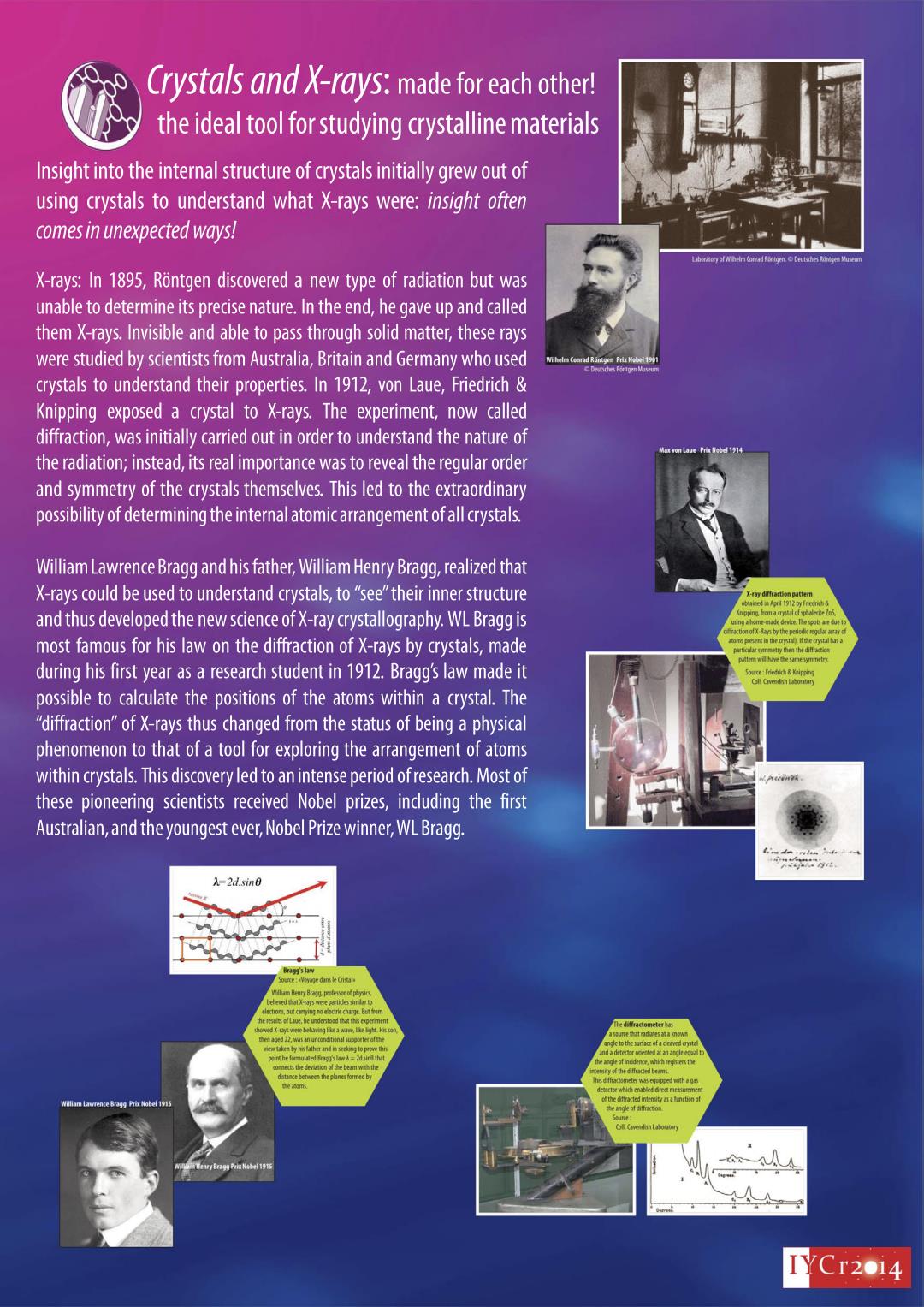正在加载图片...

Crystals and X-rays:made for each other! the ideal tool for studying crystalline materials Insight into the internal structure of crystals initially grew out of using crystals to understand what X-rays were:insight often comes in unexpected ways! X-rays:In 1895,Rontgen discovered a new type of radiation but was unable to determine its precise nature.In the end,he gave up and called them X-rays.Invisible and able to pass through solid matter,these rays were studied by scientists from Australia,Britain and Germany who used crystals to understand their properties.In 1912,von Laue,Friedrich& Knipping exposed a crystal to X-rays.The experiment,now called diffraction,was initially carried out in order to understand the nature of the radiation;instead,its real importance was to reveal the regular order and symmetry of the crystals themselves.This led to the extraordinary possibility of determining the internal atomic arrangement of all crystals. William Lawrence Bragg and his father,William Henry Bragg,realized that X-rays could be used to understand crystals,to"see"their inner structure and thus developed the new science of X-ray crystallography.WL Bragg is most famous for his law on the diffraction of X-rays by crystals,made tn the pattee hesame symmetry during his first year as a research student in 1912.Bragg's law made it possible to calculate the positions of the atoms within a crystal.The 'diffraction"of X-rays thus changed from the status of being a physical phenomenon to that of a tool for exploring the arrangement of atoms within crystals.This discovery led to an intense period ofresearch.Most of these pioneering scientists received Nobel prizes,including the first Australian,and the youngest ever,Nobel Prize winner,WL Bragg. 入=2d.sim0 Hrase's taw e:ge dansna umHn8e与 2.ws an ncnd m Lawrence Bragg Pri Nob oll Cavendah Labotatory IYCr2●14